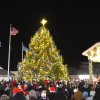Is it critical to evaluate wine without its bottles and labeling being observable? I believe it is. It is equally important to look askance at any eval being done on site or with the owner/winemaker. The crux of this issue has been thoroughly discussed and written of. “Confirmation bias” is a phenomenon where observers were shown to seek out and add gravity to evidence that confirms their initial hypotheses. In most cases, even the most erudite will ignore or denigrate evidence that could disprove their original conviction. As Sir Francis Bacon wrote in the late 1500s, “It is the peculiar and perpetual error of the human understanding to be more moved and excited by affirmatives than by negatives.” Don’t confuse frequency bias with confirmation bias. Critics should test their initial biases by searching for evidence against them. I am now slipping down the proverbial slippery slope of joining the pedantic. Those who are still reading are probably wondering how many samples I’ve consumed this weekend. Between the snowstorm and my beloved NY Giants stinking up the airwaves, it was quite a bit. Anyhow, if you are interested in more info, Wiki did a good job here: en.wikipedia.org/wiki/List_of_cognitive_biases.
This intro is actually a follow-up on last week’s illustration of how four well-regarded writers were so dissimilar when describing the same wine. Not to elevate myself to their lofty stature, I have found myself in similar circumstance after buying wine at its source from the delightful raconteur winery owner or winemaker, then sampling it properly with a small group of knowledgeable people and realizing my notes may as well have been written in Sanskrit.
Thanks for being patient.
Keep your eyes peeled for David Ramey’s Sidebar High Valley Sauvignon Blanc 2014. We know Ramey is very well known for his Chardonnay production. His venture into SB has met with great success. Critics scored Sidebar as one of the top five High Valley wines. The juice was sourced from Ritchie Vineyards and Brassfield Estate in Lake County. Brassfield is one of the highest-elevation Cali Coastal vineyards at 1,800 feet. The cooler climates under the drought conditions in Cali the past few years have given us a run of delicious varietal white wines.
This Sidebar pours pale lemon-colored with a pleasing bouquet of citrus and stony minerality. On the palate, tangy citrus and melon flavors ride an extra-dry frame. Oak aging and lie stirring deliver a lovely, creamy texture supported by bright acidity and a clean, long, mineral finish; 89 McD under $19.
Another winemaker I follow, David Phinney (think the Prisoner and Orin Swift and Locations), is a high-value, low-cost producer loved by Robert Parker. In this case I agree. His recent efforts with the Location series have continued his reputation.
Phinney sources juice country or region wide, then makes wines, usually priced under $17, that are far outside the normal screed prompted by local restrictive labeling laws. Mr. Phinney recognized the abundance of juice available worldwide. He began buying various varietal juices and blending them, often in unorthodox ways, to produce approachable wine which is at least on par with the terroir-driven products.
The series often uses letter designation to indicate place of origin, such as F=France, CA=Cali, etc. However, E signifies Spain. I’m unsure why. (Espana?) So far, all recent productions have sold out quickly. One I recently enjoyed was Location F-2. It was blended of Grenache from Roussillon, Rhone Syrah and small amounts of various Bordeaux varietals, all from the 2012 vintage. The juice was fermented in oaken vats, blended, then barrel aged 10 months. Dark ruby-colored, with black currant, lavender, barrel spice and a bit of licorice aromas, it is full-bodied with a juicy, ripe flavor of plums and hints of tea on the palate. Ready to drink now.
I am completely on board for these type wines. As Charlie the Tuna might say, we want wine that tastes great more than the overhyped, label-driven, rare due to parsing, super-expensive “great labels.” Wine chefs like Phinney gather the best ingredients from disparate locales, blend them to taste and vinify in a fashion that extracts the most from the wine, all at a fair price. What a novel idea.























































